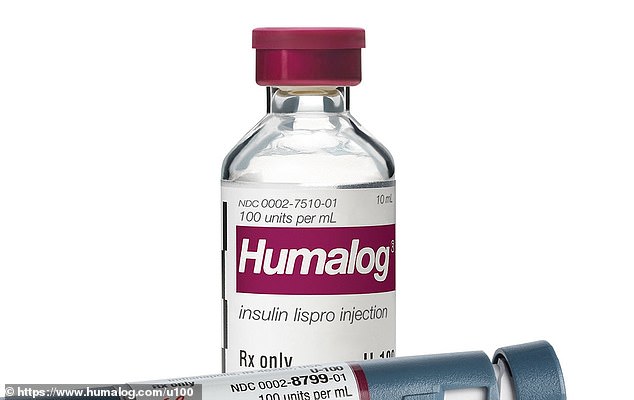Drugmaker Eli Lilly says two of its diabetes drugs are in short supply as millions of patients face weeks of chaos
Pharmaceutical giant Eli Lilly announced a temporary shortage of two types of insulin, a drug taken by more than six million Americans.
Patients will have a harder time getting their Humalog and Insulin Lispro injections from wholesalers and pharmacies early next month, the company said.
In the meantime, patients should discuss switching to another insulin treatment, which is easier said than done given the various hoops insurance companies may make patients jump through to get them.
The company added that it will continue to produce the products and ship them “as soon as possible” without providing an explanation for what caused the robbery.
Shortages of diabetes medications are nothing new. The latest example involves NovoNordisk’s drug Ozempic, originally designed to help the pancreas produce more insulin but became wildly popular for its stunning weight loss benefits.
America is in the midst of an obesity and diabetes epidemic. Rates of the latter are expected to explode over the next thirty years to the point where only half of Americans who need insulin will be able to get it.

Injectable insulin pens that have the drug loaded in them are not affected, only the vials. Market analysis shows that more than 6 million units of the lispro shots have been sold in the past three months, suggesting about the same number of people could be affected by the shortage.
Most wholesalers and pharmacies will be short on supplies for at least a few weeks, putting the lives of millions of people at risk. According to data analytics firm IQVIA, more than six million pieces of insulin lispro injection, the type affected by the recall, have been sold within the past three months.
Lilly said: ‘We recognize that any supply issue could cause disruption to people’s treatment regimes, and we are acting urgently to address this. Anyone experiencing difficulty filling their prescription should contact their healthcare provider to discuss switching to the same insulin in a pre-filled pen or other insulin treatment options.”
But insurance plans may not cover certain types of insulin, including the pens, which can cost about $140 per pen.
Diabetics need insulin to live, and many will die without it. Without hours, the body creates an overload of ketones by breaking down fat for fuel. They can build up in the body to dangerous levels leading to diabetic ketoacidosis, which can lead to coma or even death.
The US is in the midst of an obesity epidemic that is increasing the number of cases of type 2 diabetes. More than 38 million Americans have diabetes – that’s almost 12 percent of the population.
That’s up from about 22.3 million in 2014, and it’s true expected to balloon to at least 60.6 million by 2060.
About eight million Americans rely on insulin to treat the condition and prevent complications ranging from kidney failure to heart disease.
And with an ever-growing population, more and more Americans will need insulin to treat new cases of the condition.
About 79 million Americans will need insulin by 2030, but only half of them will have ready access to the treatment, according to a modeling study published in the journal Lancet Diabetes and endocrinology.
The shortage Lilly is currently experiencing could impact millions of people, as Lilly is one of the three largest insulin manufacturers in the country, alongside NovoNordisk and Sanofi.
The three companies account for 90 percent of the global insulin market and almost 90 percent 100 percent of insulin delivery in the U.S.
Eli Lilly has not said why it sees this shortage
The shortage will only affect insulin vials, not pens, which doctors hope will help alleviate some of the panic people may be experiencing.
Dr. David Ahn, a diabetes specialist from California, said: ‘Many posts forget to mention this fact, and I fear that unnecessary panic may actually make the situation worse. Remember the big toilet paper rush of 2020?”
Supplies shortages are far from the only problem diabetics have faced in the past year. Insulin prices have continued to rise even though it is cheap to make – about $4. But adjusted for inflation, Eli Lilly’s list price for Humalog rose by approximately 680 percentto $275 per vial in 2018, since it was first sold in the US in 1996.
However, manufacturers have capped the price of several types at $35 per month, a saving grace for millions of people. More than a million Americans have said they are rationing their insulin supplies to save money.
